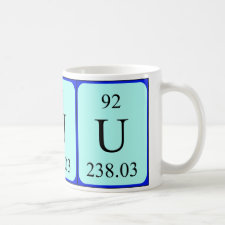
Authors: James D, Venkateswaran G, Rao TP
Article Title: Removal of uranium from mining industry feed simulant solutions using trapped amidoxime functionality within a mesoporous imprinted polymer material.
Publication date: 2009
Journal: Microporous And Mesoporous Materials
Volume: 119
Issue: (1-3)
Page numbers: 165-170.
DOI: 10.1016/j.micromeso.2008.10.011
Alternative URL: http://www.sciencedirect.com/science/article/B6TH4-4TSD9JG-4/2/d76f94f7ef8df626f389a8135e9bf0fc
Abstract: Ion imprinted polymer (IIP) material of mesoporous nature was prepared in two steps: (i) by forming binary/ternary complexes of uranyl imprint ion with a suitable non-vinylated uranophile, formamidoxime and/or vinylated ligand, 4-vinyl pyridine (VP) and (ii) by thermally copolymerizing them with 2-hydroxy ethyl methacrylate (HEMA) as the functional monomer and ethylene glycol dimethacrylate (EGDMA) as the cross-linking monomer in presence of 2,2'-azobisisobutyronitrile as initiator and 2-methoxy ethanol as porogen. The IIP material formed was subsequently leached with 50% (v/v) HCl to obtain leached materials which then rebind uranyl ions selectively from aqueous solutions. Corresponding non-imprinted polymer (NIP) materials were also prepared under the same conditions exactly as the IIP but in the absence of the uranyl ion template. Extensive characterization of IIP (both unleached and leached) and NIP materials were done using SEM, XPS, EDS, IR and BET-surface area and pore size analysis. The optimal pH for quantitative removal is 8.0-9.0 and the IIP materials offered either higher or comparable retention capacity 80.0áμmol of uranyl ion per g of polymer with respect to most of the hitherto prepared uranyl IIP materials. In addition, the imprinting effect was noticed in all the experimental variables and selectivity characteristics. The applicability of IIP material for the removal of emerging toxic pollutant uranium from uranium mining industry feed simulant solution is successfully demonstrated
Template and target information: uranium, uranyl ion
Author keywords: Mesoporous imprinted polymers, uranium, Amidoxime, Detoxification, Mining industry simulants



Join the Society for Molecular Imprinting

New items RSS feed
Sign-up for e-mail updates:
Choose between receiving an occasional newsletter or more frequent e-mail alerts.
Click here to go to the sign-up page.
Is your name elemental or peptidic? Enter your name and find out by clicking either of the buttons below!
Other products you may like:
 MIPdatabase
MIPdatabase









